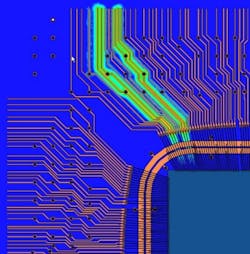Enhancing high-bandwidth wireless communications with LAN technology is aim of Gonzaga research project
“We’re creating a state-of-the art anechoic chamber for testing our physical antenna prototypes, but even the best antenna test chambers are limited in their size and shape, the performance of their absorptive materials, and the range of frequencies they can accommodate,” says Steven D. Schennum, professor of electrical engineering at Gonzaga.
“By simulating electromagnetic fields and currents in a virtual environment using ANSYS software, we can test the performance of our antenna designs for any location, plane, or geometry—and over a limitless range of frequencies—before moving to the prototype stage,” Schennum says.
The design tools HFSS and DesignerRF from ANSYS provide results at a system level—including fabricated metal parts, cables, and other components—to capture the effect of individual changes on how the antenna system performs as a whole, says a representative.
For more information contact the Gonzaga University School of Engineering and Applied Science at www.gonzaga.edu, or ANSYS Inc. at www.ansys.com.
